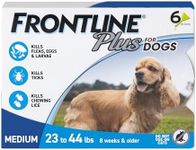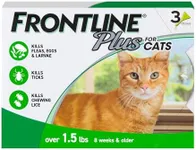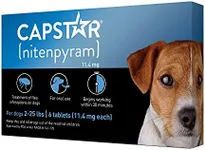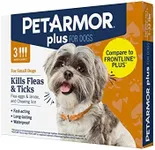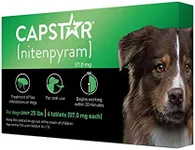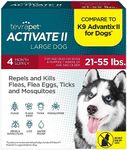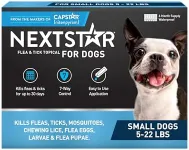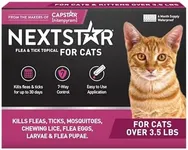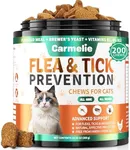Buying Guide for the Best Flea Tick
Choosing the right flea and tick treatment for your pet is crucial for their health and comfort. Fleas and ticks can cause a range of issues from mild irritation to serious diseases. When selecting a product, it's important to consider several key specifications to ensure you pick the best fit for your pet's needs. Understanding these specifications will help you make an informed decision and keep your pet safe and healthy.Type of TreatmentFlea and tick treatments come in various forms such as topical treatments, oral medications, collars, and shampoos. Topical treatments are applied directly to your pet's skin and are effective for a month. Oral medications are ingested and can provide protection for up to three months. Collars offer long-term protection, usually up to eight months, and shampoos provide immediate relief but need to be used regularly. Choose the type based on your pet's lifestyle and your convenience. For instance, if your pet swims often, a collar or oral medication might be more suitable than a topical treatment.
Active IngredientsThe active ingredients in flea and tick treatments are what make them effective. Common ingredients include fipronil, imidacloprid, and permethrin. Each ingredient targets fleas and ticks differently, and some pets may react better to certain ingredients. It's important to know if your pet has any sensitivities or allergies to specific chemicals. Consult your veterinarian to determine which active ingredient is safest and most effective for your pet.
Coverage SpectrumSome treatments only target adult fleas and ticks, while others also eliminate eggs and larvae. A product with a broader coverage spectrum can help prevent future infestations by breaking the life cycle of the pests. If your pet has a severe infestation, a treatment that covers all life stages of fleas and ticks would be more effective. For maintenance and prevention, a product targeting adult pests might suffice.
Duration of EffectivenessThe duration of effectiveness varies between products. Some treatments need to be applied monthly, while others can last several months. Consider your schedule and how often you are able to administer the treatment. If you prefer less frequent applications, look for products with longer-lasting effects. However, ensure that the duration aligns with your pet's exposure risk to fleas and ticks.
Pet's Weight and AgeFlea and tick treatments are often formulated based on the weight and age of the pet. It's crucial to choose a product that matches your pet's specific weight range and age group to ensure safety and effectiveness. Using a product not suited for your pet's weight or age can lead to underdosing or overdosing, which can be harmful. Always check the product label and consult your veterinarian if you are unsure.
Water ResistanceIf your pet frequently swims or gets wet, a water-resistant treatment is essential. Water-resistant products maintain their effectiveness even after exposure to water, ensuring continuous protection. If your pet is not often exposed to water, this feature might be less critical. Assess your pet's lifestyle to determine if water resistance is a necessary specification for your chosen treatment.
